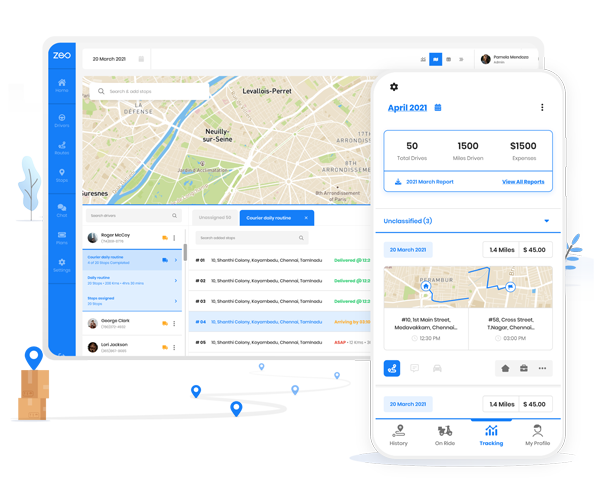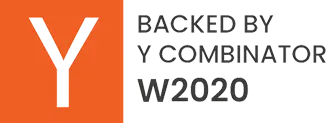What is route planning?
Route planning means finding the most efficient route between point A and point B. It is not necessarily the shortest route but it is the most cost-effective route which also helps you make faster deliveries or client visits.
What is the current state of route planning?
Route planning softwares have made it easier to plan optimized routes. It takes only a few seconds to plan routes with multiple stops which would have taken hours if done manually. Route planning softwares are offering useful features like:
- Importing customer data using multiple formats
- Seamless integration with e-commerce platforms
- Adding delivery time windows
- Driver tracking
- Real-time updates to the routes
- Sharing live location with the customers with accurate ETA
- Capturing digital proof of delivery
- Data analysis
Book a quick 30-minute demo call to understand how Zeo can be the perfect route planner for your business!
Route planning trends and predictions:
AI and Machine learning
Artificial Intelligence (AI) is the most important trend in making route optimization even more effective. AI makes use of various forms of data, both historical and current, to plan optimum routes. AI can make use of historical traffic data and current traffic situations to estimate accurate ETAs. AI software keeps learning continuously to make more accurate predictive recommendations.AI also helps in optimizing the route in real time. In case of any unexpected changes in the traffic, an alternative optimized route is shared with the driver.
Walmart is already using the power of AI to make its last-mile delivery super efficient. As the demand for deliveries surged at the start of the covid-19 pandemic, it launched Express Delivery service for its customers.
As a customer places an order, Walmart’s AI system considers factors like the customer’s preferred time slot, orders already placed in that time slot, availability of vehicles, the distance of the route, and any delays due to weather. All these factors along with a capacity management tool determine available time slots to check if a customer is eligible for express delivery. The route is then optimized and trips are assigned to the vehicles to ensure timely delivery.
Last-mile delivery using drones
An emerging trend in last-mile deliveries is to use drones for making the deliveries. Drones are autonomous aerial devices that can be programmed to travel a particular route. Drones enable even faster delivery without the requirement of additional manpower which makes them ideal for high-priority deliveries. Drones are convenient for the delivery of smaller packages, however, they are also being tested for the delivery of medium to heavy packages in a secure manner.
Google’s parent company Alphabet’s drone delivery service – Wing – hit the milestone of 200,000 commercial deliveries by March 2022. And starting this year, Alphabet will be expanding its drone delivery service beyond the testing cities. It expects to make millions of deliveries using drones by mid-2025.
Optimization based on vehicle capacity and driver skills.
Businesses want to make the best use of their resources. A route planning software that enables optimum loading of the vehicles as per the vehicle’s capacity is becoming essential.
Similarly, for service industries, skill-based optimization of the route plays a significant role. If a client requires a specific service you want to ensure that the representative with the right skills is sent to them.

increase fuel savings
Hassle Free Deliveries & Pickups!
Optimize routes with our algorithm, reducing travel time and costs efficiently.
Get Started for Free
Zeo route planner allows you to plan optimized routes by matching the skills of the drivers with the skill required to complete the service requested by the customer.
Sign up for a free trial of Zeo Route Planner now!
Read more: Skill Based Job Assignment
Autonomous vehicles
Autonomous vehicles or self-driving vehicles are already a reality. However, it will be interesting to see the use of autonomous vehicles for the purpose of making deliveries at scale. Autonomous vehicles work with the help of software algorithms. It helps in overcoming the massive challenge of driver shortage.
Big companies like Domino’s, Walmart and Amazon have been testing deliveries by autonomous vehicles at a small scale. Even Uber Eats has signed a deal with Nuro, an autonomous vehicle startup, to test driverless food deliveries.
IoT and Telematics
Another trend in the future of route optimization is the use of Internet of Things (IoT) devices. These devices can be installed on vehicles to collect data in real-time, such as vehicle speed, fuel consumption, and location. This data can be used to optimize routes, reduce fuel consumption, and identify maintenance issues before they become major problems.
IoT can also enable real-time tracking of shipments, which can improve visibility for businesses and customers alike. This can help businesses to identify any issues that may arise during the delivery process, such as delays or damage to goods, and take appropriate action.
Summary
The future of route planning is exciting. Various companies like Walmart, Alphabet, Uber, Amazon etc. are experimenting with route planning trends and predictions at different levels. Technologies like AI, drone delivery, skill-based route optimization, autonomous vehicles and IoT, all look very promising. Higher expectations from the customers are pushing the companies to try out new ways of delivering to stay ahead of the competition!

Are you a fleet owner?
Want to manage your drivers and deliveries easily?
Grow your business effortlessly with Zeo Routes Planner – optimize routes and manage multiple drivers with ease.

increase fuel savings
Hassle Free Deliveries & Pickups!
Optimize routes with our algorithm, reducing travel time and costs efficiently.
Get Started for Free




















